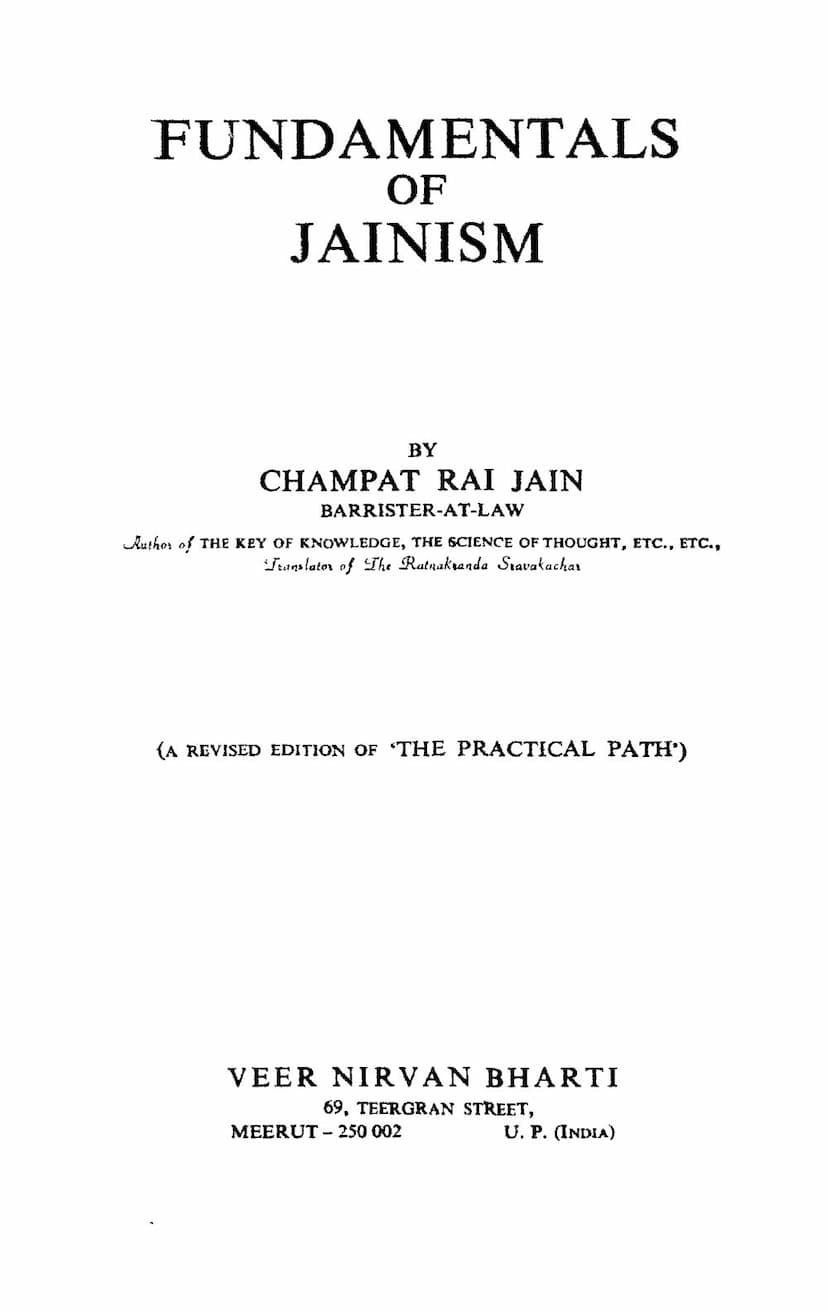Fundamentals Of Jainism
Added to library: September 1, 2025
Loading image...

Summary
This document is a summary of "Fundamentals of Jainism" by Champat Rai Jain, published by Veer Nirvan Bharti. The book is a revised edition of "The Practical Path" and focuses on the practical, scientific method of self-realization as taught by the Jaina Tirthankaras.
Key Themes and Concepts:
- The Three Jewels: The path to salvation consists of Right Belief, Right Knowledge, and Right Conduct.
- Law of Cause and Effect: This universal law applies to both worldly and spiritual matters, underscoring the importance of scientific validity in spiritual pursuits.
- The Seven Tattvas: The core principles of Jainism, which an aspirant must understand, are:
- Jiva (Soul): The intelligent, eternal substance.
- Ajiva (Non-soul): Matter and other non-intelligent substances.
- Asrava: The influx of karmic matter into the soul.
- Bandha: The bondage of the soul caused by karma.
- Samvara: The stopping of the influx of karmic matter.
- Nirjara: The gradual shedding or elimination of karmic matter.
- Moksha: The attainment of perfect freedom and liberation.
- The Method of Philosophy (Anekantavada): Jainism emphasizes understanding reality from multiple viewpoints (standpoints or "nay as") to avoid one-sided absolutism and confusion. This is presented as "intellectual Ahimsa."
- The Saptabhangi System: A seven-fold system of predication used to describe reality from different standpoints, acknowledging that a thing can be affirmed, denied, or both, from various perspectives.
- The Nature of Karma: Karma is described as subtle, invisible matter that attaches to the soul, obscuring its natural qualities. The book details the eight main types of karmas and their numerous sub-categories, explaining how they influence one's life, physical form, and experiences.
- The Process of Enslavement: The soul is bound by karmic matter due to desires and passions. This bondage is explained through the concept of the karmana sharira (karmic body) that accompanies the soul.
- The Path to Emancipation: This involves:
- Samvara (Stopping Influx): Controlling the mind, speech, and body through practices like gupti (control), samiti (carefulness), das-lakshana dharma (ten virtues), and bhavana (meditation).
- Nirjara (Elimination of Karma): Achieved through tapa (asceticism), both external (bahya) and internal (antaranga). Key practices include fasting, reduced eating, abstention from certain foods, meditation, study, and self-restraint.
- Stages on the Path (Gunasthanas): The spiritual journey is divided into fourteen progressive stages, charting the soul's progress from ignorance (mithyâtva) to omniscience and liberation (Moksha). These stages are marked by the modification and elimination of karmic energies and the manifestation of the soul's innate qualities.
- Dharma in Practice: Emphasizes the practical application of Jain principles in daily life, particularly the paramount importance of ahimsa (non-violence) as the highest dharma. It discusses the ethical conduct for laypeople and ascetics, including vows, dietary rules, and the importance of proper education and upbringing for children.
- Comparative Antiquity of Jainism: The book argues for Jainism's ancient origins, predating many aspects of Hinduism, and posits that Vedic scriptures contain allegorical representations of Jain teachings.
- Soul-Substance: The nature of the soul is explained as a self-existent, eternal, and partless substance, which is the repository of knowledge and energy. It contrasts this with materialistic theories and the effects of matter on the soul's natural purity.
In essence, "Fundamentals of Jainism" presents Jainism as a rational, scientific path to spiritual liberation, emphasizing ethical conduct, self-discipline, and the profound understanding of universal principles, particularly karma and the nature of the soul.